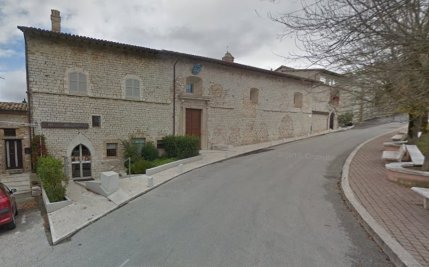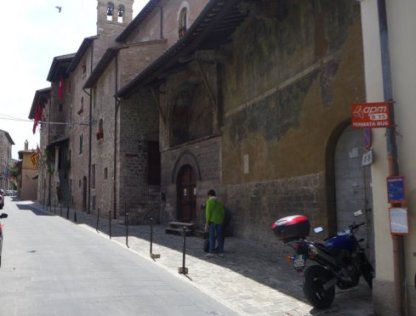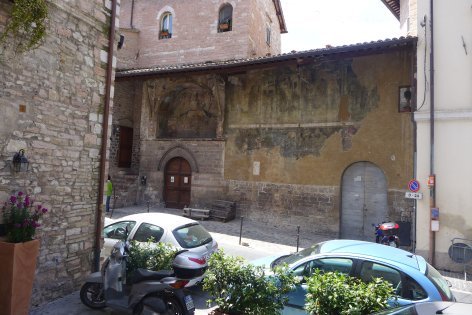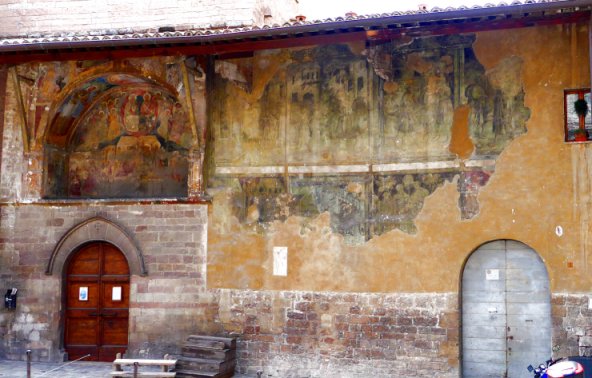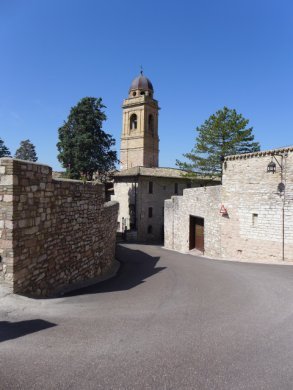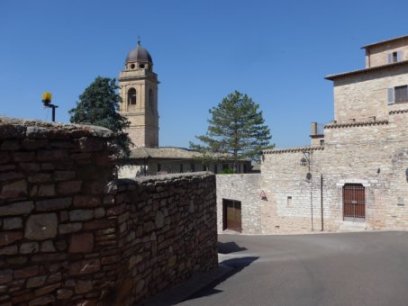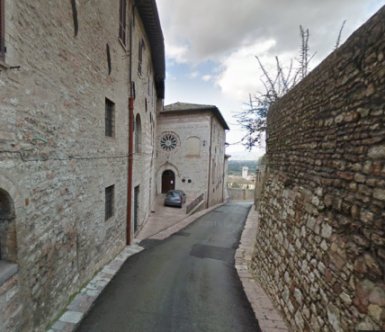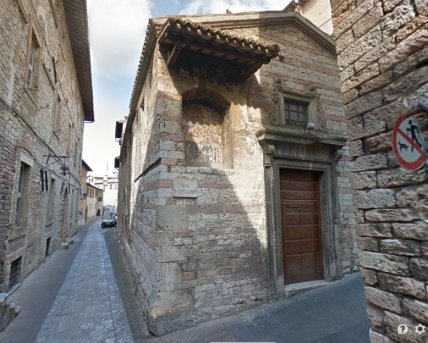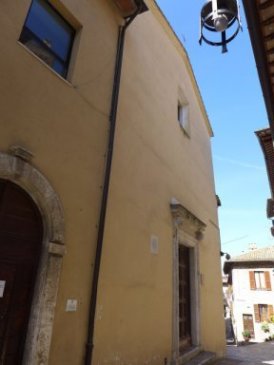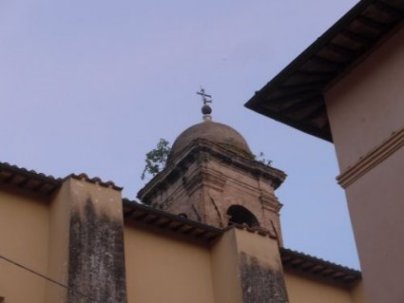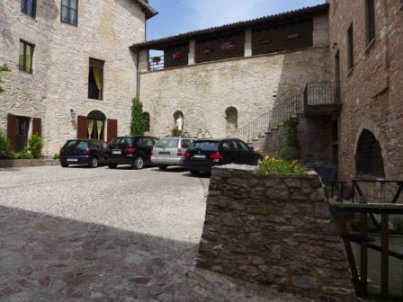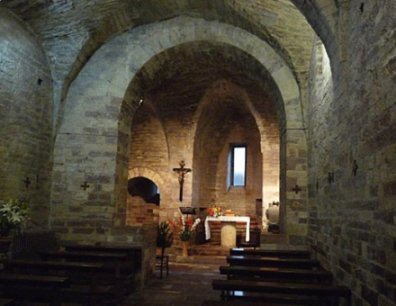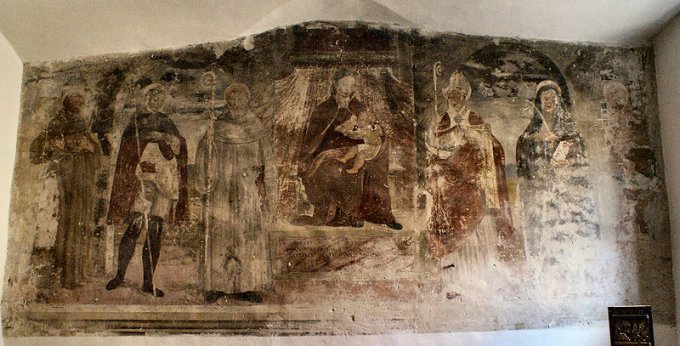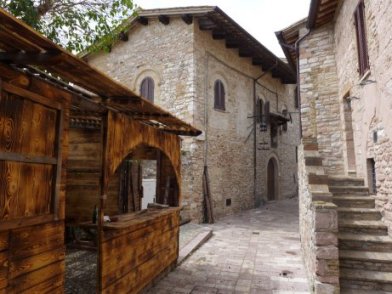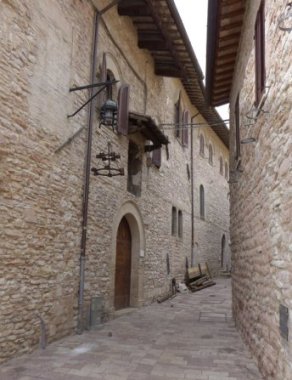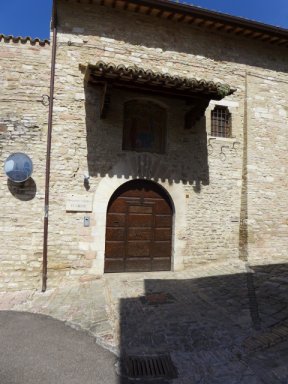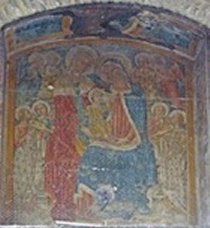|
Other churches |
|
| Here are just a few more of the many religious establishments in Assisi which are not covered on previous pages. Our visit was not long enough (probably by several weeks) to visit all of them! | |
Santa Caterina Situated not far from the Roman amphitheatre. Established as a nunnery around 1278. The nuns were evicted in 1501 for scandalous behaviour, and eventually replaced by Cistercian nuns, who found themselves in trouble by breaking the rules on maintaining seclusion. The buildings now house a hotel, spa and restaurant, so it seems not a great deal has changed. |
|
|
|
|
| Confraternita
di San Francesco The first record of the confraternity dates from 1330. The outside wall has interesting but badly damaged 15th century frescos showing an Annunciation and Christ and angels appearing to St Francis (over the door) and the Seven Works of Mercy (To the right.) The chapel is now used occasionally for Anglican services. |
|
|
|
|
|
|
|
| Sant'Apollinare A slightly complicated story. There were two nunneries next door to each other, San'Apollinare and San Paolo. It seemed that the San Paolo nuns didn't behave themselves, and the nunnery was shut down in 1452 and the property tranferred to Sant'Apollinare. in 1897 it became the Monastero delle Benedettine di San Giuseppe, but it seems it is still generally known as Sant'Apollinare. |
|
|
|
|
| In the picture below, the building that juts out is the former Sant'Apollinare; San Paolo is nearer the camera. | |
|
|
|
| Oratory
of San Gregorio The confraternity of San Gregorio moved here in 1325. In the niche over the door is a fresco of the Madonna and child with saints, though it is difficult to make out. Apparently there is some interesting art inside. |
|
|
|
|
| Sant'Antonio
da Padova Dating from 1607 on the site of a earlier church. Once a Franciscan friary, now a school, as evidenced by the rowdy racket (and the plaintive pleas of a teacher) we heard as we walked past. |
|
|
|
|
|
|
|
| San Giacomo Muro Rupto A splendid name - St James of the Broken Walls, near the city wall to to north of the town. Someone called Ubertino di Guittone paid for a church on this site in 1088 as a penance for committing murder. |
|
|
|
|
|
|
|
| Sant'Andrea Dates from the early thirteenth century. It was a Franciscan convent: it is still a Franciscan establishment concerned with missionary work. |
|
|
|
|
| Monastery
of San Quirico A female Franciscan community moved here around 1450. Built on the site of Roman Baths. |
|
|
|
|
|
Assisi churches page 1 Sacred places home page Home page - explore the site |
|
